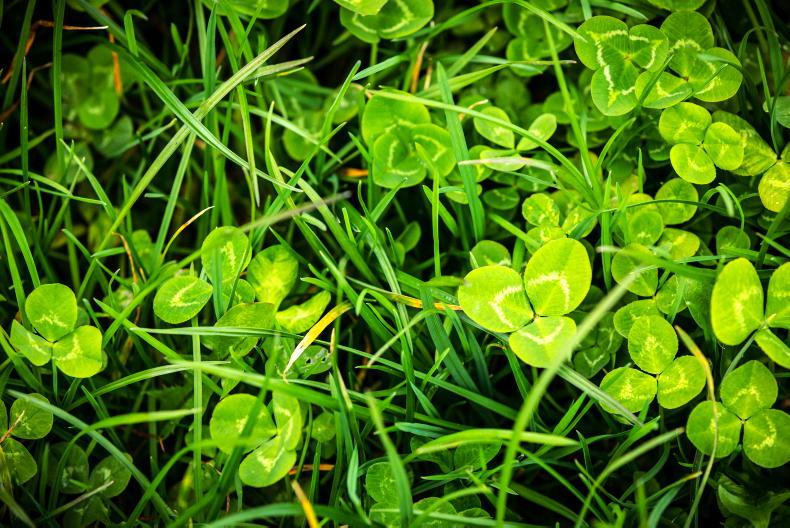The use of chemical nitrogen in Ireland has declined by 30% between 2021 and 2023. The benefits of this reduction in fertiliser N has been a reduction in greenhouse gas emissions, less exposure to fertiliser costs on farms and potentially reducing the risk of nitrate leaching on farms.
However, not all of the reduction has been positive, and there’s increased evidence that reducing chemical nitrogen in the absence of other forms of nitrogen has led to some unintended consequences on many farms.
Even among the farmers in the Clover 150 programme, the Teagasc led clover project on commercial farms, there has been slippage in some important key performance indicators.
Fertiliser N use has reduced from 206kg N/ha of an average in 2021 to 156kg N/ha in 2023 and this has reduced the N surplus from 175kg N/ha to 140kg N/ha and increased the nitrogen use efficiency from 32% in 2021 to 36% in 2023.
While all of the above is positive and on target, the amount of grass grown on these farms has reduced from 13.7t DM/ha in 2021 to 12.95t DM/ha in 2023.
While weather obviously has an impact on grass growth, there’s no doubt that reducing chemical nitrogen does also. Feeding more concentrate and buying in more silage are two symptoms of not growing enough grass.
Both of these feeds contain protein, and protein contains nitrogen.
In essence, the programme farms have increased both concentrate and bought in silage between 2021 and 2023. This has resulted in an extra 19kg N/ha being imported onto the farm.
So while bag nitrogen has decreased by 50kg N/ha, total nitrogen coming onto the farms has really decreased by 31kg N/ha when one accounts for increased feed purchases.
Question
The question may be asked, why didn’t clover make up the difference? One of the reasons for this is that there is insufficient clover on these farms to bridge the gap between the reduction in bag nitrogen and what nitrogen is required to grow enough grass to sustain the stocking rates on these farms.
On average, among the programme farms there is clover present on 65% of the land area, at a rate of 23% clover content based on scores taken by programme co-ordinator Caitlin Looney three times throughout the year.
The message from Looney is that a more targeted approach with nitrogen is required based on the clover content, and that cutting back the nitrogen tap too soon limits growth.
With this in mind, Teagasc have published a new guideline for fertiliser nitrogen applications based on farms that have clover and require a high pasture growth rate.
The details are presented in Table 1, with the key point being that there is very little difference in application rates between grass-only and clover swards in February, March and April.
The plans only start to deviate from May onwards, and organic nitrogen in the form of slurry or soiled water is in addition to the rates prescribed, although soiled water is included in some situations.
The rates are given per month not per rotation, so farmers should adjust application rates based on rotation length and the recommendation per month.
The importance of sulphur is often overlooked as an essential nutrient for grassland. The general rule of thumb has been to apply sulphur at a rate of 10% of nitrogen. So if 200kg N/ha is applied, 20kg/ha of sulphur should be applied also.
The problem with this rule of thumb is that while nitrogen rates have reduced in line with increased clover content, the requirement for sulphur hasn’t changed. So the requirement stays the same at 20kg S/ha with about 5kg S/ha of this supplied in slurry, so 15kg S/ha should be applied in bag form frontloaded to the spring.
With further cuts looming to the upper limit on chemical nitrogen application rates, more and more farmers will be squeezed on grass growth.
That is unless they get on board the clover bus and use that to drive nitrogen production on their own farms.
What the experience of the Clover 150 programme farms tells us is that reducing nitrogen where there is not enough clover reduces grass growth and increases feed use, and probably reduces profitability.
So the advice is clear; get clover established as soon as possible, but where clover is not established or not present in sufficient quantities, then continue to spread chemical N at appropriate rates as per Table 1.






 This is a subscriber-only article
This is a subscriber-only article










SHARING OPTIONS: